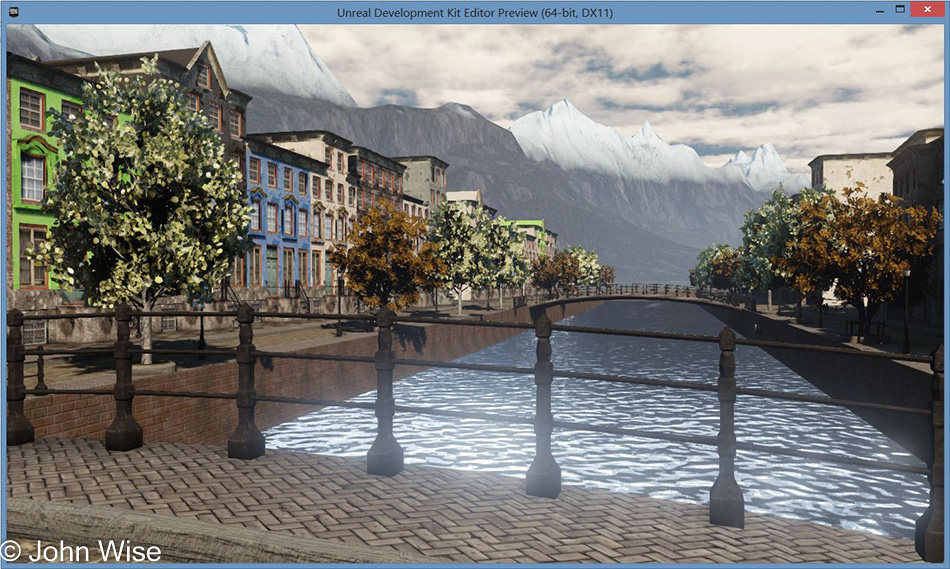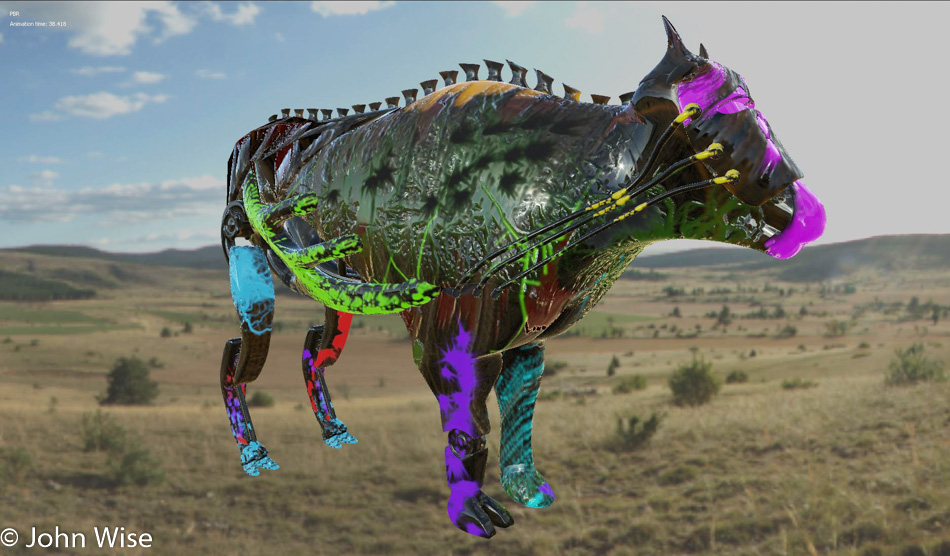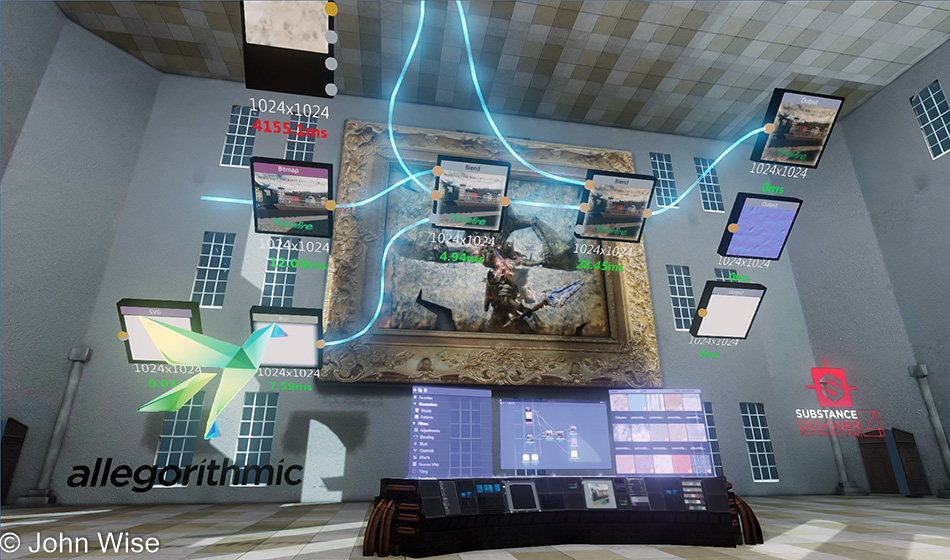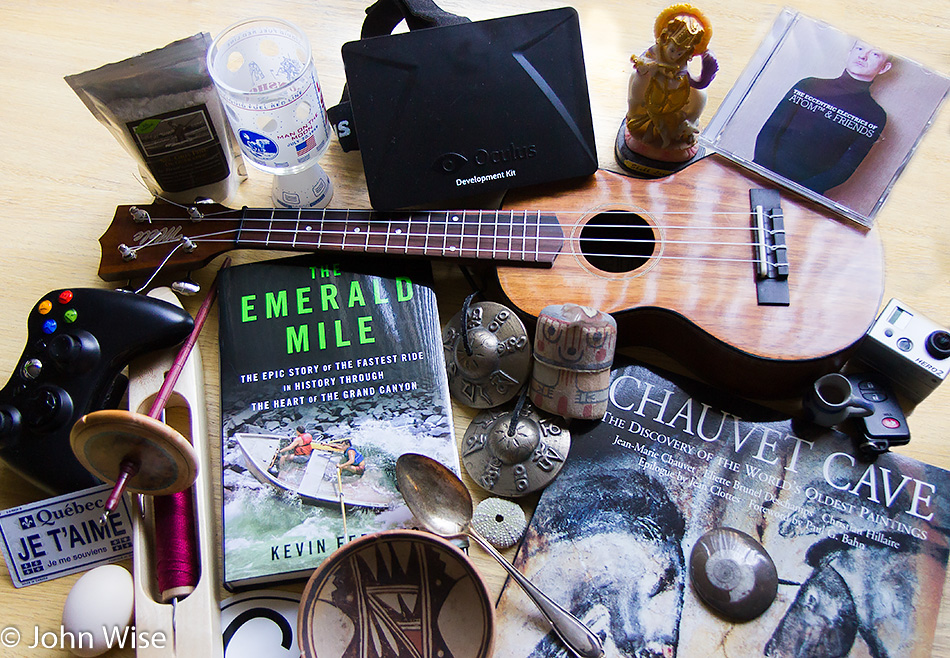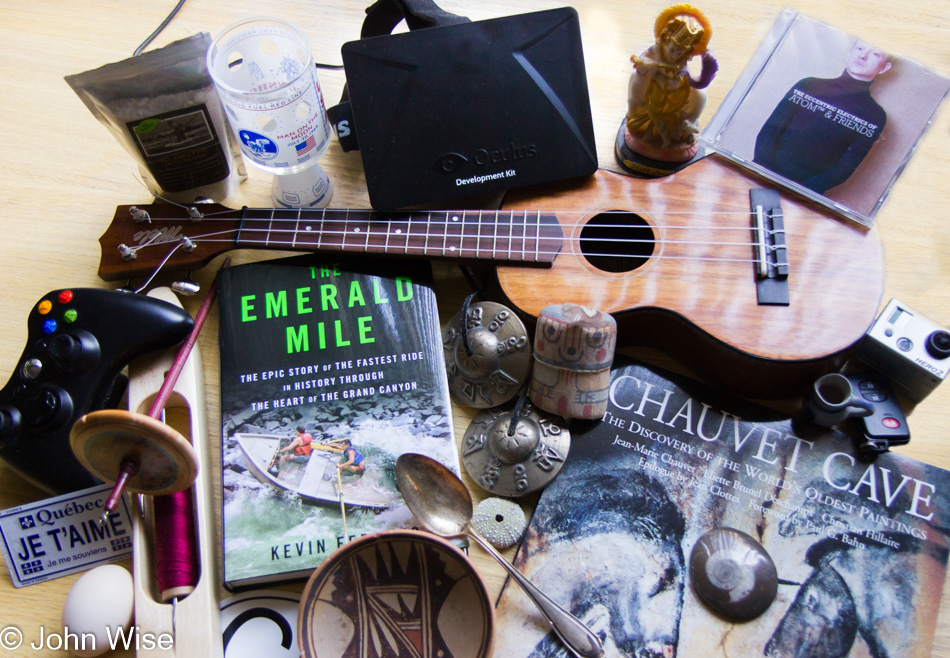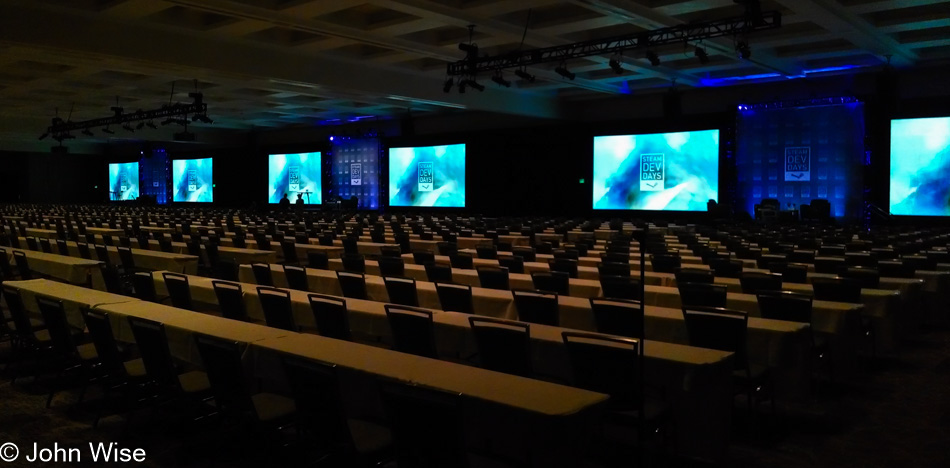
Flew up to Seattle, Washington, a few days ago to attend the Steam Dev Days event hosted by Valve. I was desperate to go as it appeared there was going to be an emphasis on Virtual Reality, so I reached out and requested an invite code, and much to my surprise, I was sent one. Being the over-enthusiastic zealot I am when I focus my attention on something I’m interested in, getting to listen in on Valve’s ideas of where VR is heading fits my needs to satisfy and even amplify my already off-the-chart curiosity. I visited the Convention Center the night before to find out just where I needed to be the next morning. I arrived Wednesday morning while they were finishing setting up the hall and our catered hot breakfast. I was trying to be polite when the guys who created Black Mesa for Counter-Strike strode in and sat where I “was” going to sit. We had about a two-hour wait before things got underway. As it turned out, I sat at the end of the center row; little did I know that this would work out PERFECTLY. Gabe Newell, the founder of Valve, was the first speaker.
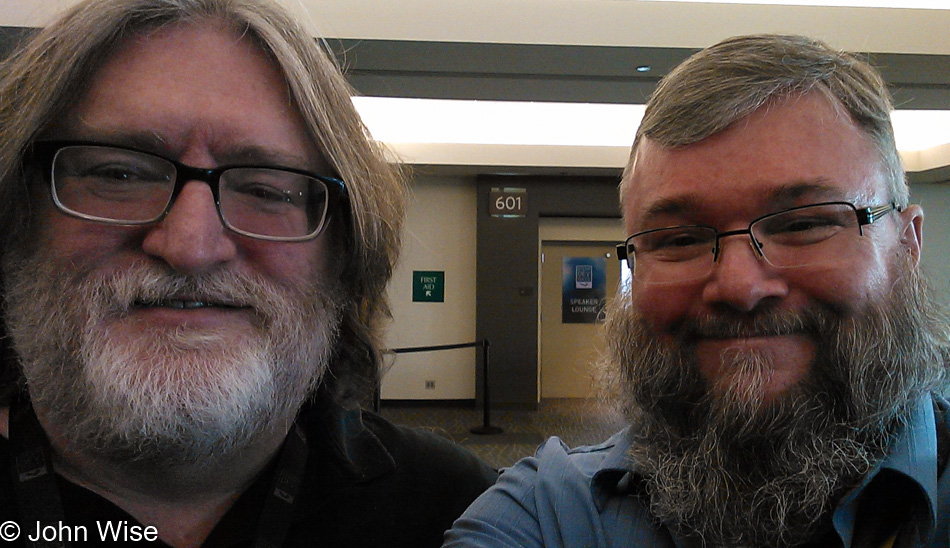
As Gabe finished speaking, I was not one of the lucky people who were able to ask him a question. Not a problem, I saw an opportunity. I got out of my seat, and as he made his way out of the hall through the seated crowd of 2000 attendees, I followed him. Once in the hallway, I asked my question. As we walked along and he answered, he asked if we could sit down a moment and continue. Wow, I’m kinda blown away by now. After a short while, he asked if I had the chance to see their implementation of VR, “Nope.” He got up and said, “Come on.” At the end of the hallway is the man behind the curtain, seriously. Gabe asks Atman Binstock, a Senior Engineer who’s been working on Valve’s VR project if he can get me in. There are a limited number of spots open to demo this prototype headset during these two days, and they are already reserved for the likes of people from Rockstar, Ubisoft, Intel, etc. Atman says he can offer me an abbreviated demo. I am indebted to Gabe, but I’m not even sure in my excitement if I offered him my profound thanks.
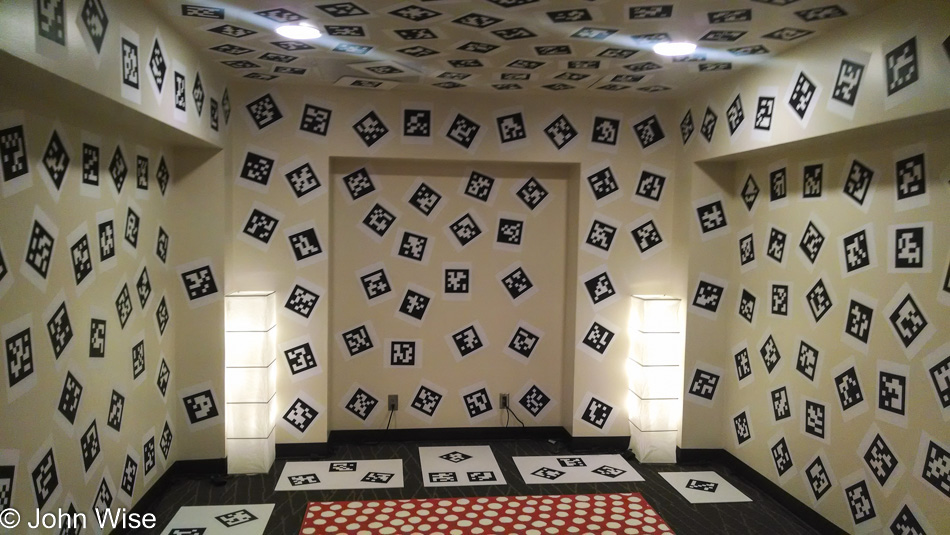
Now, I, too, am behind the curtain and in the magic room. The walls are covered with “Fiducial Markers” – they are what the camera on the headset I’ll put on will see so positional tracking is maintained. For the Oculus Rift demo at CES the week before in Las Vegas, the guys turned the concept around and covered the headset with markers where a camera on the wall kept track of the users’ head movements; that prototype system was called Crystal Cove.
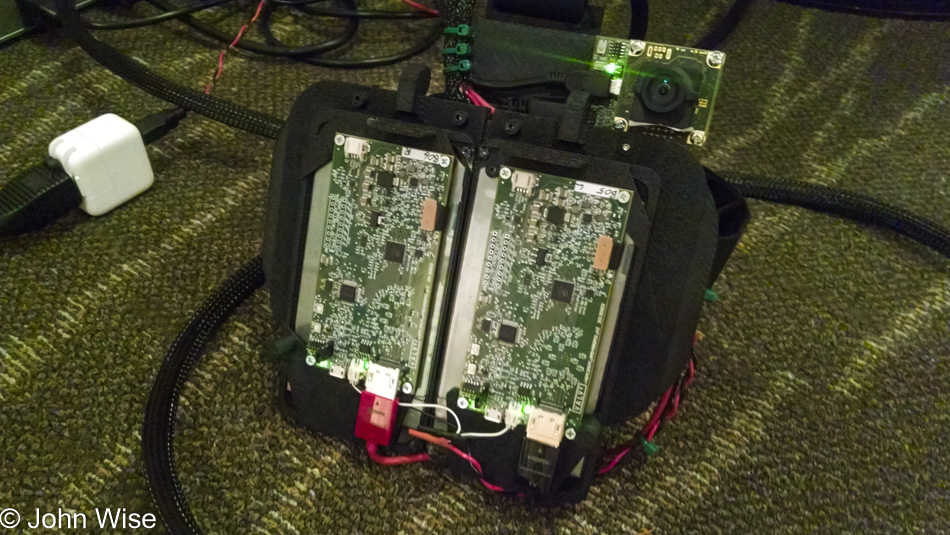
This is Valve’s prototype VR headset I had the opportunity to put on. There are no words to describe the next series of events and impressions except to try and sincerely say that Virtual Reality is going to CHANGE EVERYTHING! EVERYTHING!!! Valve and Oculus call it “Presence” – when any idea that you are in something artificial fades away, and you are transported into this “other” place. I stood among cubes, simple cubes stretching off into the distance all around me. I could have been in Tron; it was the most amazing thing I’ve ever seen. I was standing in a giant cube with the Yahoo home page on the six sides of the cube; this was the most amazing thing I had ever seen. You should know where this is going. Until amazement gave way to epiphany and a near-religious experience – I was in the universe of CDAK. This environment that buckled my knees and brought me to tears is a tiny 4k program that originated out of the demoscene. Back in the nascent days of the personal computer industry, “crackers” would create small demos that usually preceded a game they cracked – very common back when I owned a Commodore 64 and then my Amiga. My breath was taken away; I seriously had to gasp at how beautiful the universe was. At this moment, if there had been any uncertainty, I was convinced that VR was going to steamroll humanity. Exploring intricacy and beauty, which is impossible to realize in our physical world, is what’s going to make this ubiquitous. By this time, I don’t know what to say to Atman as I remove the headset; I’m stunned. Telling anyone what this was or how it felt will never compare to how the individual is going to find their worldview permanently altered from just one encounter with VR – assuming it isn’t going to be in an environment shooting people.
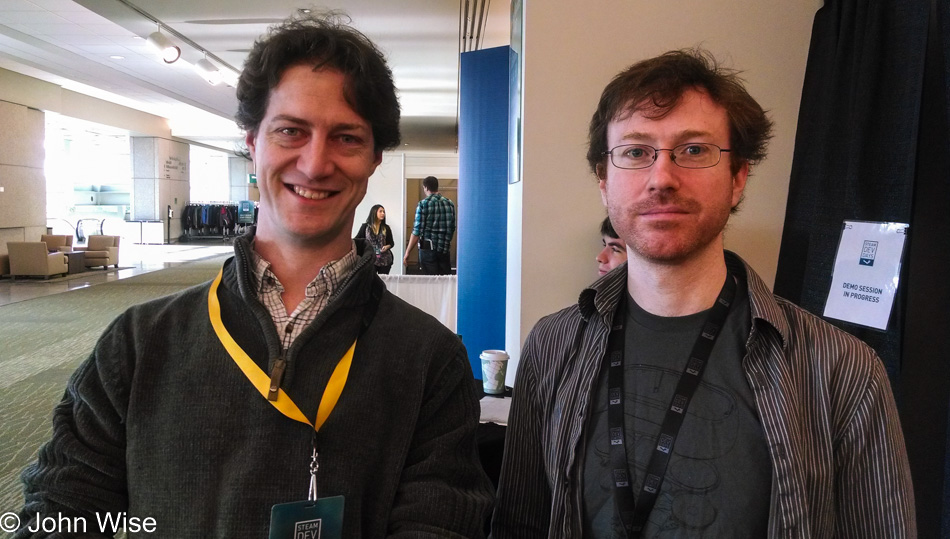
I emerge back into the real world. Gabe is gone. On the other side of the curtain, I’m introduced to Tom Forsyth, who now works with Oculus but has been with Valve. On his right in this photo is Atman Binstock, who does work with Valve. I’m tongue-tied. I want to ask a question, but my mind is reeling. I concede defeat in that my thoughts are not to easily be unscrambled, and I say bye, though I want to go back in, and I head back to the conference floor. I walk away with a smile that will have me looking like an idiot for the next three days.
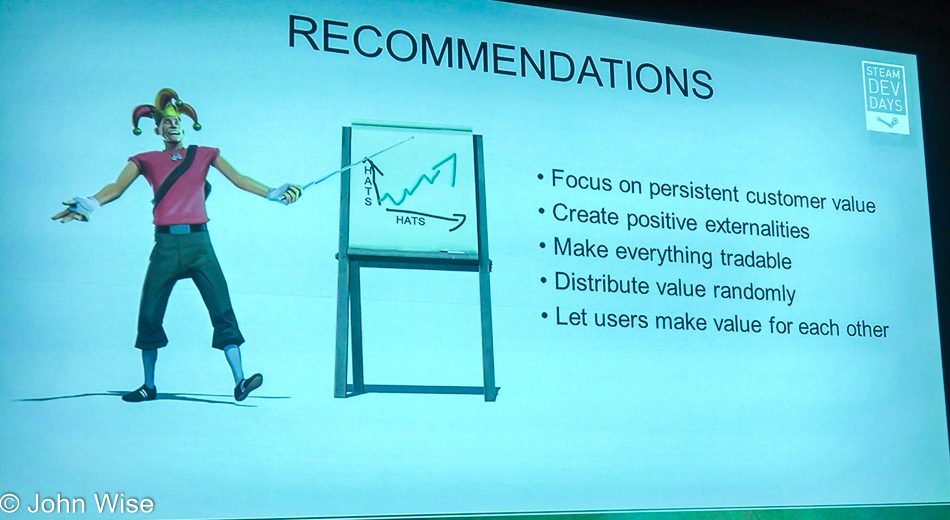
Now, I have to focus on the other reason I’m here in Seattle: learning from Valve. When Gabe Newell gave his introductory talk, he said he was only going to focus on two things: the most important two things Valve sees for the future are Open Platforms and Virtual Reality. With that in mind, the people here to talk with us are spilling their corporate guts about what’s working and how things have changed. They point out the economic benefits of in-game trade and commerce, of how they can no longer make all the content, and the user wants an active role in creating UGC – User Generated Content. Two examples are how they were surprised when users made more than 20,000 skins that were being traded in Counter-Strike, but that didn’t prepare them for what happened in Portal. Users created more than 318,000 maps, a feat Valve would never have been able to do on their own. We hear over and over about openness, that we must evolve and learn, and that economic connectivity between developers and gamers is strategically absolutely important. After some amazing talks about the success of Counter-Strike, Team Fortress, Portal, and Dota2, it was time for me to attend the afternoon sessions. Talks about Music in Games, Collaborative Coworking, and Steam’s Early Access program were the sessions I chose; I would have liked to attend all the sessions, though.
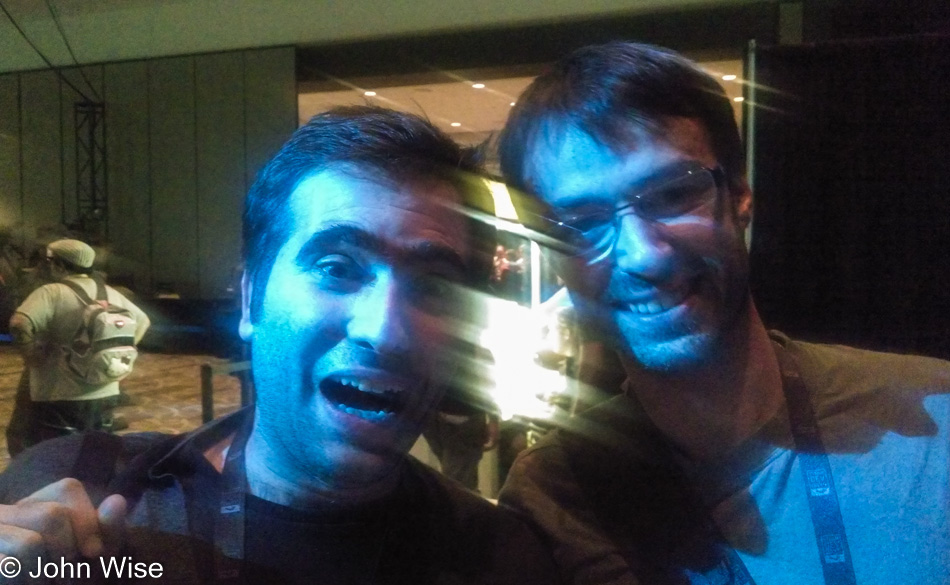
At the end of the sessions was a get-together in the main hall with DJ and drinks. There was also the matter of a giveaway that was part of our swag bag. At the start of the conference, attendees were handed a bag of goodies and a t-shirt. In that bag was a prototype Steam Controller, a notebook, a pen, some stickers, and, of course, the really cool Steam Dev Days canvas bag it all came in. But we were also given a card that was to be turned in this evening. Before I collected my free gift, I ran into Alexis Khouri and Jeremie Noguer of Allegorithmic. I had just met these two guys the month before in Los Angeles when their CEO was over from France to make the official announcement of their new software called Substance Painter. They told me of something totally cool coming to Substance Designer 4.1, but I can’t say anything yet except that it’s going to be really cool.
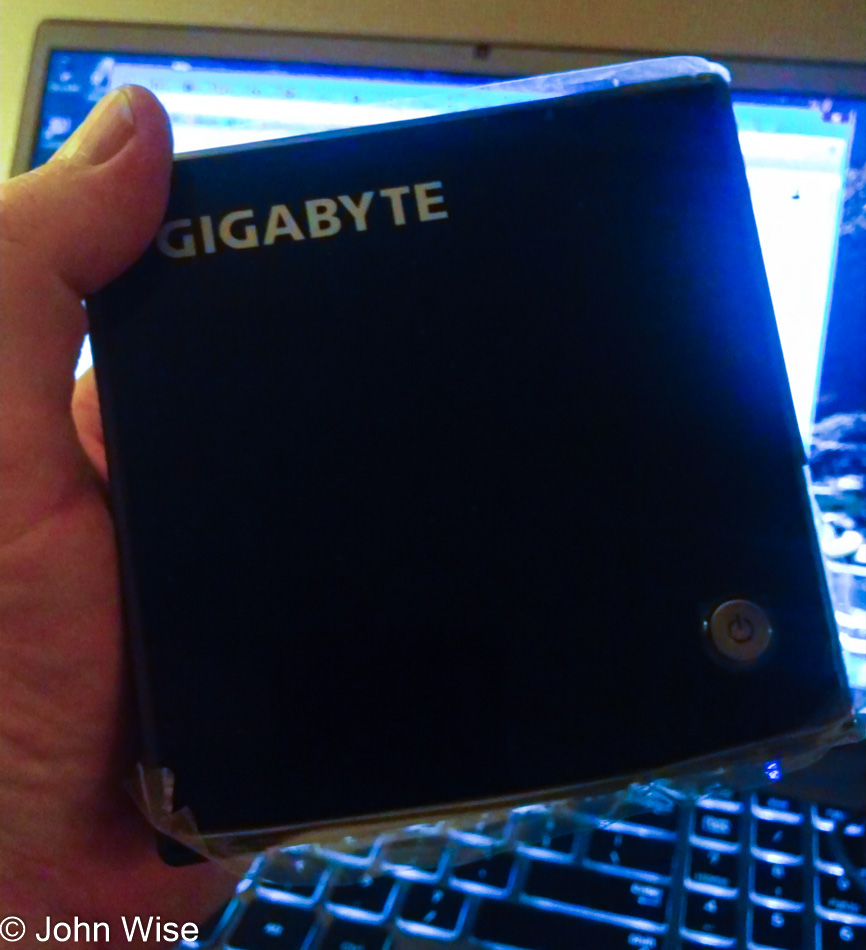
Btw the card we were given earlier in the day to be traded at the evening social event was this i4770-based Gigabyte-built Steam Box called Brix Pro. While I was happy to hear about this and receive my very own, nothing was overshadowing my experience in Valve’s VR room. If it hadn’t been for all the great content of the sessions and how open Valve was with how content is being sold, I could have easily gone home at around 10:30 on this first day. You can be sure, though, that this mini powerhouse of a computer had me giddy as a kid this swag bag didn’t disappoint.
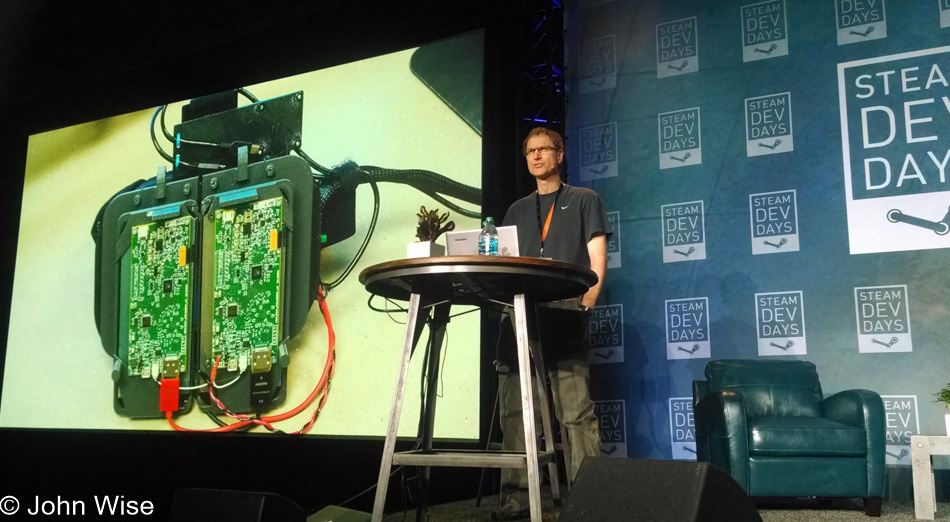
The next day, we heard talks in the main room about ARG – Alternative Reality Games. What I was waiting for, though, were the afternoon sessions, as there was a big focus on VR. There was so much interest that the room this was supposed to be held in was expanded to handle 700 participants. Michael Abrash gave a great talk about how close we are to commercial virtual reality. Instead of me describing it, you should just go to his slide show and read about it yourself – click here.
We also listened to Joe Ludwig, who talked about VR and Steam; check out his presentation – click here.
Palmer Luckey was here with his crew from Oculus, including CEO Brendan Iribe, co-founder Nate Mitchell, and Tom Forsyth. Palmer was coming off a successful couple of weeks that saw the company raise $75 million with Andreessen Horowitz and demonstrate the Crystal Cove at CES in Vegas. Palmer leaped on stage and dove into an hour of material that was compressed into a 30-minute presentation.
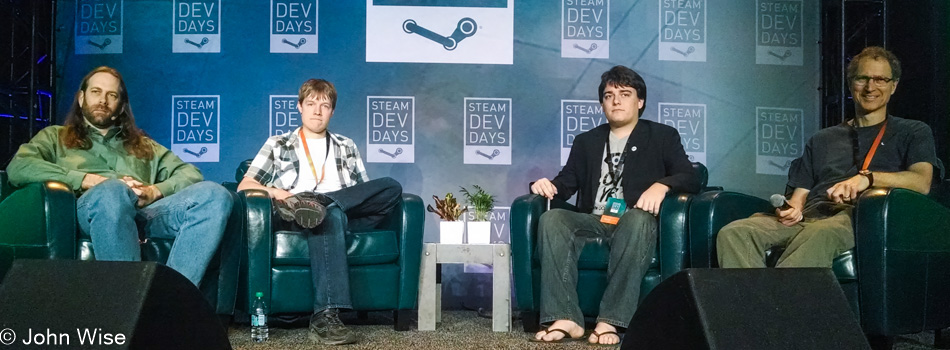
After the individual talks, the guys sat down to answer questions from the audience. From left to right are Joe Ludwig of Valve, Devin Reimer of Owlchemy, Palmer Luckey of Oculus, and Michael Abrash from Valve. The conversation lasted about an hour, after which we broke for a catered dinner in the main room, along with more music and drink.
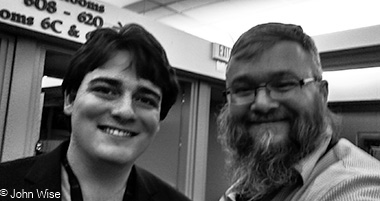
As I was leaving I ran into Palmer, not the first time, that was at Siggraph just this past July. I said hello and took the blurryest selfie ever, hence the small black-and-white version I’m posting. Over the two days here, I was able to see that an older generation and decades of digital advancements had given the opportunity to a young 20-year-old guy to change the world. The people who will make the content that drives that advancement are twenty and thirty-somethings who are harnessing complexity and are still able to learn new tricks and hopefully bend with an entertainment industry that is about to go through the greatest contortions it has ever faced. Get ready, world; you ain’t seen nothing yet.
